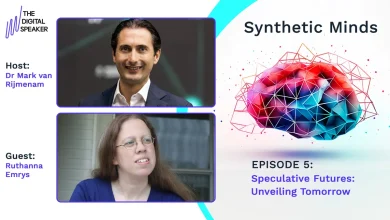
AI is ubiquitous and we all know it by reading about some or the other new product or application showing up in our feed. At the core of AI algorithms lies the data, in the form of numbers. So, let’s talk about the impact of AI in our lives through numbers aka the statistics. Around 77% of devices leverage AI. One of the major uses of AI, specifically the emergence of Generative AI in conversing in human-like language has enabled 85% of AI users to use it for creating content.
Extending it to the industry-wide impact, the retail industry is leading with 72% of retailers employing AI, and 63% of the IT and telecom sector using it. Undoubtedly, it brings remarkable benefits. Take, for example, Netflix which saves $1B using machine learning techniques. But, there is another side to such automation and advancements, i.e. replacing the human workforce. Reportedly, intelligent robots can impact 30% of the global workforce by 2030, impacting 375M careers.
While the numbers could vary from different sources, one thing is clear – AI is rapidly changing the way businesses are run and comes with its pros and cons. So, let’s analyze the impact of AI on the technology sector.
Code-Assistants
AI algorithms analyze large amounts of data to generate actionable business insights, helping organizations achieve efficiencies through automation and much more.

Image by Author
Talking about efficiencies, think of how AI-powered code assistants can assist developers in software development by suggesting auto-completion, writing boilerplate code, detecting syntax errors, security vulnerabilities, etc. However, like many other uses of AI, it is recommended to leverage them to augment the developers’ productivity; over-reliance on code assistants to write production-grade code must be avoided.
Cyber-Security
Cybersecurity presents numerous challenges including the presence of a large number of vulnerable systems or devices per organization, diverse attack vectors, a shortage of cyber-skilled professionals, and an overwhelming amount of data. A self-learning, AI-based cybersecurity system could tackle these challenges by continuously gathering and analyzing data from enterprise systems, providing intelligence across areas such as IT asset inventory, threat exposure, control effectiveness, breach risk prediction, fast incident response, and explainability of the model.


Image by Author
The advantage of such a technology is that it brings scale and speed, surpassing the limitations of human capability. Tasks such as threat detection and incident management demand analyzing real-time data coming from multiple sources, that can be proactively monitored using AI algorithms.
AI-Powered Chatbots
Be it the code-assistants or the use of AI techniques for cybersecurity, these are closer to the enterprises and are not often evident to their customers. So, let’s shift focus to one of the most pervasive uses of AI in enriching the customer experience through generative AI-powered smart assistants.


Image by Author
Customers need a forum to engage and seek a response to their queries and concerns – and virtual assistants are a great way to address this need. It provides them with information at their fingertips, anytime and anywhere.
Traditional vs Gen-AI Assistants
However, such traditional virtual assistants have been around for some time. So, where do generative-AI-based smart assistants uplift the whole experience?


Image by Author
Well, their ability to converse in human-like language allows them to understand the context very well. This contextual learning involves a nuanced understanding of language, curating a well-formed response that elevates customer experience, and cutting down on time to resolve the query. Gen-AI assistants are able to engage in more natural and fluid conversations leading to a more personalized response.
World of Personalization and Opportunities


Image by Author
And yes, the future is all about personalization. It spares the cognitive overload on behalf of the users to apply their custom layer that could cater to their needs. That’s a big driver of using AI in that it speaks directly to the specific user and adapts to their characteristics. While the benefits are many, right from predicting customer behavior, recommendations, content creation, and report generation to infusing AI into existing tech products to streamline user workflows and processes, there is another side to this shiny story of AI advancements.
The Other Side: Workforce Disruption
The rapid integration of AI into business processes has raised concerns about job displacements. The use of AI in automating the repetitive and routine tasks traditionally performed by humans. has led to the displacement of jobs in industries such as manufacturing, retail, customer service, and administrative roles. Not all sectors and occupations are impacted uniformly, in fact, there are new jobs created too. Profiles like prompt engineers, AI ethicists, Responsible AI and Compliance Officers, and AI auditors are fast emerging in the AI-driven economy.


Image by Author
However, the socio-economic implications for the workforce with low-skilled routine work are facing greater challenges in adapting to technological changes. Policymakers, businesses, and other stakeholders must come together to address these challenges and mitigate the negative impacts on workers and society as a whole. This includes organizing training programs, embedding lifelong learning initiatives, and promoting new job creation in emerging industries.
Ethical Considerations
Not just the workers, but also the consumers of AI-generated responses and predictions are concerned too. The goodness of AI algorithms largely depends on the underlying data they are trained on. Such data may include user information or sensitive details, such as PII (Personal Identifiable Information). Recently, the news has surfaced of companies using users’ data to train their models without asking for any explicit consent. Such unauthorized use of personal data breaches users’ privacy rights and is a big concern when it comes to using AI systems.


Image by Author
On top of it, the black-box nature of algorithms makes it difficult for not just the users but also for the developers to understand the reasoning behind the model response. Hence, organizations must put concerted efforts into building responsible AI that respects data privacy and promotes model transparency. While AI offers promising benefits such as increased efficiency and the ability to innovate novel solutions, it’s crucial to address user and workforce concerns responsibly to fully tap into its potential.
Vidhi Chugh is an AI strategist and a digital transformation leader working at the intersection of product, sciences, and engineering to build scalable machine learning systems. She is an award-winning innovation leader, an author, and an international speaker. She is on a mission to democratize machine learning and break the jargon for everyone to be a part of this transformation.






